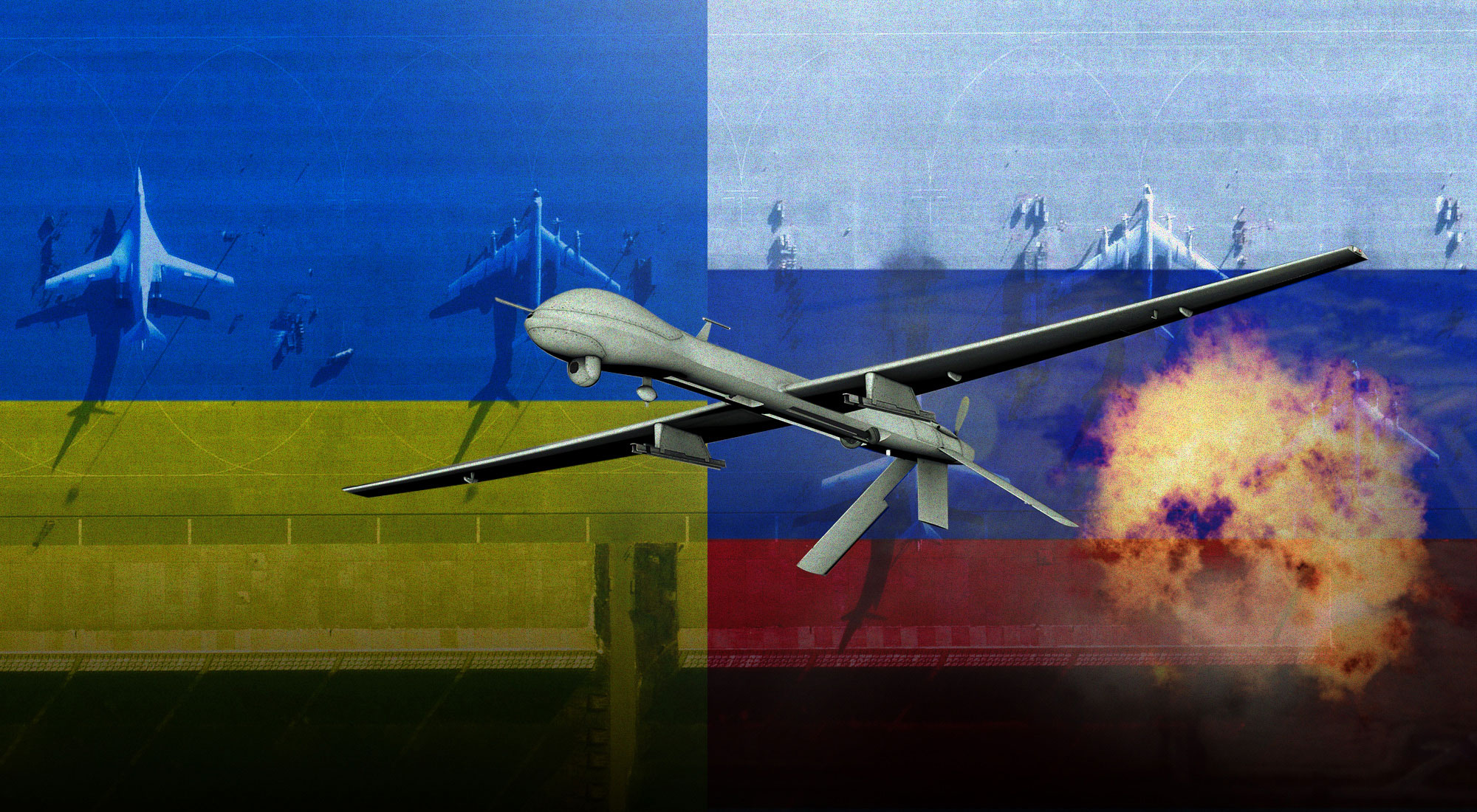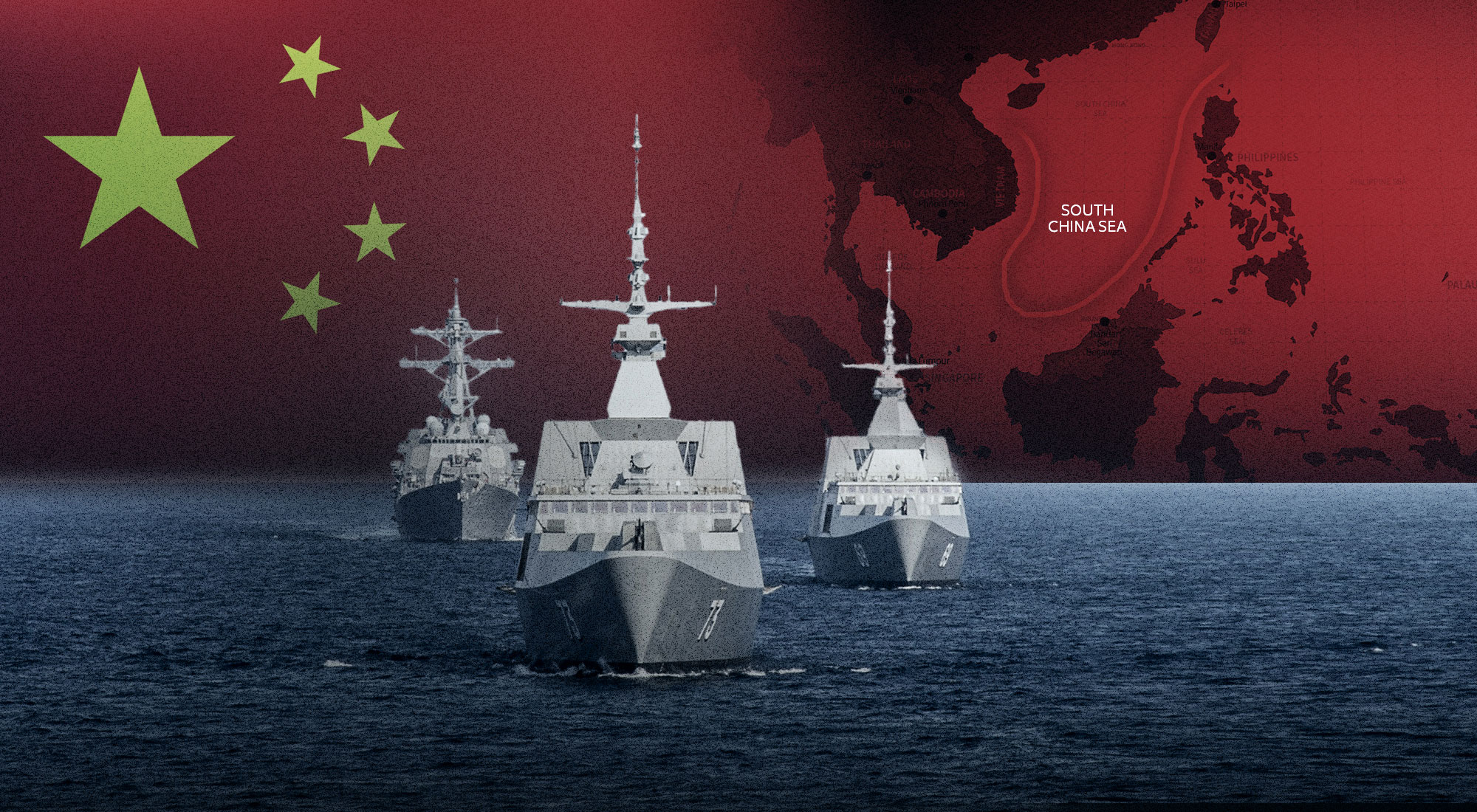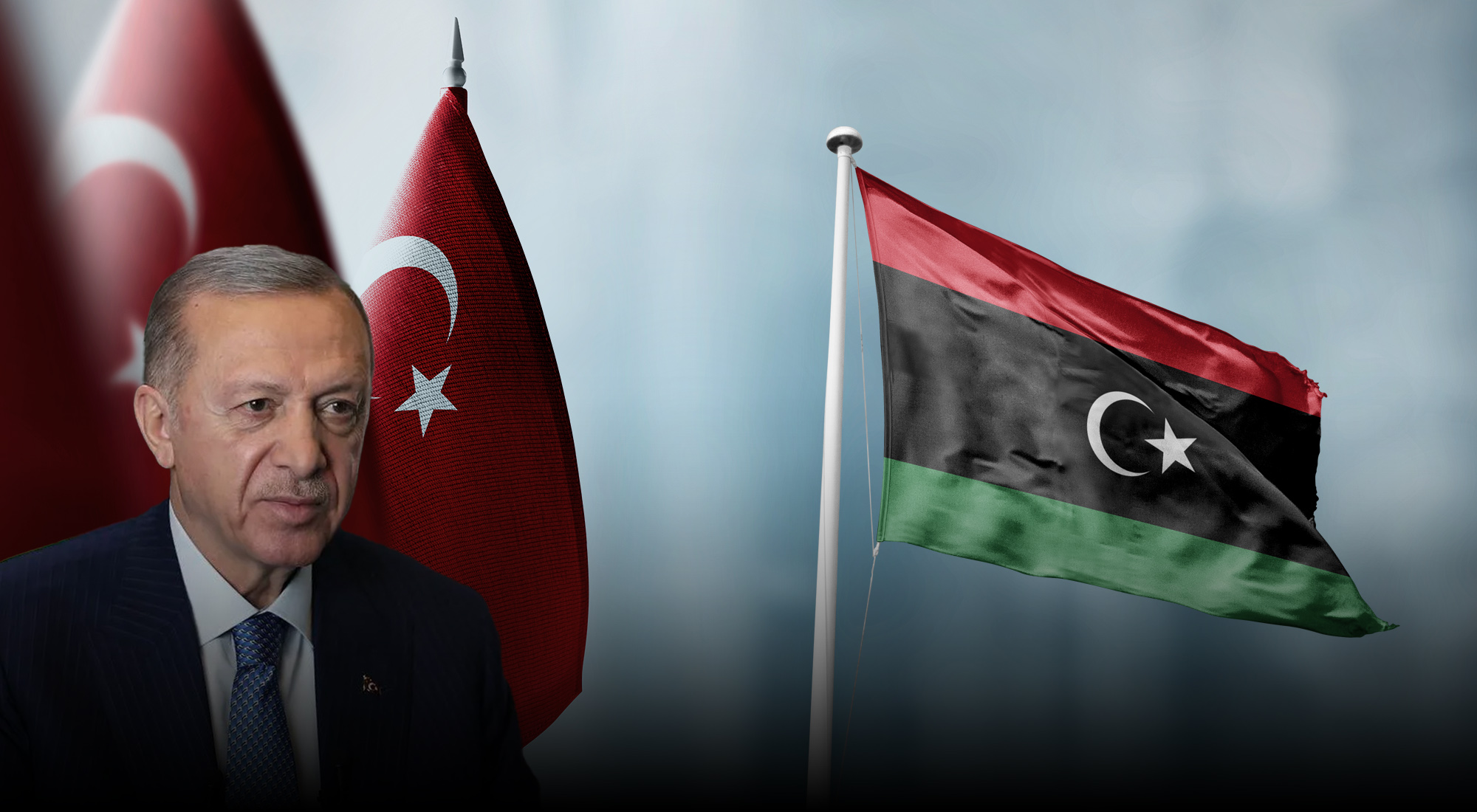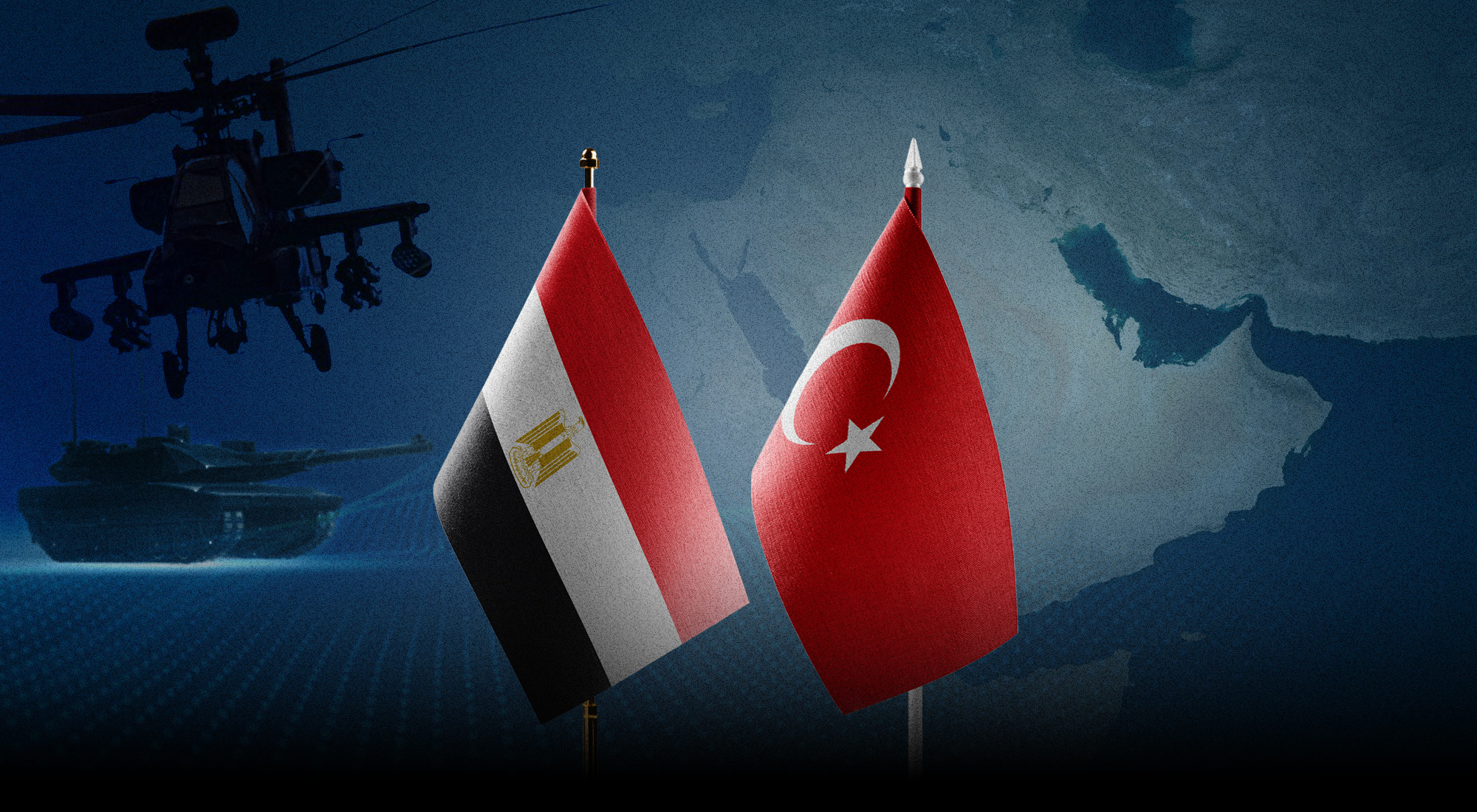On 1 June 2025, Ukraine pulled off what many now see as the boldest and most technologically advanced operation of the war: Operation Spiderweb. In a display of ingenuity and precision, Ukraine’s Security Service (SBU) deployed 117 first-person view (FPV) drones in a sweeping, coordinated strike against five major Russian air bases—stretching from Irkutsk and Murmansk to Ryazan, Ivanovo, and Amur. The damage was staggering. According to reports, 41 aircraft were destroyed or disabled, including some of Russia’s most prized strategic bombers and surveillance planes, amounting to an estimated $7 billion in losses.[1]
For many analysts, this marked a turning point in the conflict—a dramatic shift in strategy and capability. It is one of the tactical high points of the conflict. But this wasn’t just another drone strike. It was a masterclass in modern warfare, which was called ‘Pearl Harbor’ by Russian media. Planned in near secrecy and reportedly overseen by President Volodymyr Zelensky himself, the operation was launched from inside Russian territory, using trucks cleverly disguised as civilian cargo vehicles. It was a high-stakes gamble that paid off—and a clear sign of how far asymmetric warfare has evolved. With off-the-shelf drone parts and smart algorithms, Ukraine turned what might once have been science fiction into battlefield reality. It was a moment that showed the world: that even in war, creativity and daring can reshape the rules.[2]

The broader context surrounding Operation Spiderweb reflects Ukraine’s evolving strategy in a protracted conflict that is now in its fourth year and has witnessed minimal territorial changes since late 2023 except for the Russian province of Kursk. On that front, Russian forces have managed to drive Ukrainian forces away and even managed to control parts of the Ukrainian Province of Sumy, allegedly seeking to establish a buffer zone within it.[3]
Nevertheless, the war has reached a grinding stalemate on most fronts. Russia continued to exert pressure through missile strikes on Ukrainian infrastructure and energy facilities and continued ground attacks in the Donbas to control the rest of the Donetsk and Luhansk provinces, while Ukraine’s military was constrained by resource shortages. In this context, Ukrainian planners increasingly turned to asymmetrical warfare, namely drone attacks, to tip the strategic balance.
Operation Spiderweb was conceived as a bold and unconventional strike designed to break the operational inertia. The timing was crucial. The first round of peace talks between Moscow and Kyiv, on 16 May, may not have been successful in securing a ceasefire commitment, but it led to the largest prisoner swap between the two sides.
Scheduled just days before high-level peace negotiations in Istanbul, the operation was as much a strategic signal as it was a tactical success. Ukrainian leadership intended to showcase to both allies and adversaries that Ukraine retained the capability to strike at the heart of Russian military infrastructure—even in territories once considered untouchable.[4]
This shift in Ukraine’s posture had been visible for months. Since mid-2024, Kyiv began ramping up its use of drones and special operations forces in attacks on logistics centers, oil depots, and command posts inside Russian territory. However, Operation Spiderweb marked a significant escalation in both ambition and scale. Unlike earlier limited incursions, this attack involved deep infiltration, months-long preparation, and simultaneous precision strikes against five air bases scattered across vast regions of Russia, including the depths of Siberia.
The operation also signaled a psychological turning point. After years of absorbing relentless missile barrages on cities like Kyiv, Kharkiv, and Lviv, Ukraine was now demonstrating its ability to retaliate in kind—but with precision, innovation, and minimal collateral damage. This evolution reflects Kyiv’s growing doctrinal maturity, combining intelligence-led targeting, technical agility, and a flexible command structure to compensate for its numerical inferiority.
Importantly, the operation was reportedly authorized at the highest level, with President Zelensky directly involved in its oversight. This political backing indicates Ukraine’s intent to own the consequences of escalation while shaping the narrative in its favor. Through this operation, Kyiv was not just responding militarily—it was shaping the conditions of diplomacy, demanding to be taken seriously not only as a victim but as a strategic actor with initiative and vision.
2. Key Operational DetailsThe logistical and tactical execution of Operation Spiderweb demonstrated an extraordinary degree of planning, coordination, and operational secrecy. Named aptly for its multi-pronged, entangling nature, the operation struck airbases in Irkutsk, Murmansk, Ryazan, Ivanovo, and Amur. These sites were not randomly chosen; each played a key role in Russia’s air campaign infrastructure.

Attacks in the airfields of Ivanovo, Ryazan and Amu
Among the most significant targets were the Tu-95 and Tu-22M3 long-range strategic bombers. These aircraft have been central to Russia’s campaign of missile attacks on Ukrainian civilian infrastructure, often launching from well beyond Ukraine’s defensive reach. The A-50 early warning aircraft, also struck in this operation, are integral to Russia’s airborne command-and-control structure, helping to coordinate fighter jet movements and detect Ukrainian air defenses.
What made this operation truly remarkable was the means of delivery. Ukraine used 117 FPV drones—typically associated with short-range tactical engagements—and repurposed them for strategic effect. These drones were not launched from Ukrainian soil but from within Russian territory itself. Months of clandestine preparation allowed the SBU and military collaborators to smuggle drones and launch equipment across the border. The payloads were hidden inside civilian-looking vehicles such as cargo trucks and mobile wooden homes that were strategically stationed near the bases.[5]
Each truck was equipped with a remote-control system, including retractable roofs that allowed the drones to be launched silently and discreetly. Once the drones were airborne, operators used visual feeds and likely GPS assistance to guide them to their targets. The drones attacked nearly simultaneously across vast distances, causing widespread confusion and overwhelming any coordinated Russian defense.
Notably, Ukrainian operatives who had set up the launch zones were exfiltrated before the strike commenced, a detail that underscores the operation’s intelligence sophistication and high-level coordination. The ability to not only stage and launch such an operation but to do so while extracting the personnel involved demonstrates a level of operational maturity that few nations possess.
With an estimated 34% of Russia’s strategic cruise missile carriers rendered inoperable and total damages reaching $7 billion, the military and economic toll on Russia was considerable. The attack did not only neutralize immediate threats but also sent a shockwave through the Russian military establishment, revealing that even the heartland is vulnerable.[6]

The drones were reportedly smuggled in via wooden houses
3. Technological SignificanceIn terms of sheer scale, reach, and complexity, Operation Spiderweb was one of the world’s largest special forces strikes in modern history.[7] The operation looks like it has followed McRaven’s theory of Special Operations, in terms of planning, execution, surprise and purpose.[8]
Operation Spiderweb did more than damage Russian aircraft; it showcased the transformative role of emerging technologies in modern conflict. Ukraine’s use of first-person view (FPV) drones marked a new phase in drone warfare—shifting from tactical applications to operational and even strategic use. These drones, once seen as battlefield novelties, are now at the center of Ukraine’s asymmetric warfare doctrine.
The technical profile of the drones used in the operation is noteworthy. FPV drones are typically compact, fast, and agile, designed for short-range engagement. Ukraine modified these drones for long-distance navigation, autonomous or semi-autonomous guidance, and enhanced payload delivery. The incorporation of artificial intelligence (AI) into their flight systems enabled the drones to conduct terrain-following navigation, avoid obstacles, and execute precision strikes with minimal human intervention.
Visual-based AI systems, integrated with GPS navigation, allowed these drones to operate effectively even in electronic warfare environments. Russia has invested heavily in GPS-jamming and signal disruption technologies. Yet, by launching from within Russian territory and using AI-based target recognition, Ukrainian drones were able to evade these defenses. Real-time image processing and adaptive flight correction systems enhanced their strike accuracy, even in adverse conditions.
Moreover, the logistical component of the operation revealed another layer of technological sophistication. The drones were concealed in specially modified civilian trucks, disguised as mobile homes or commercial cargo. These vehicles were equipped with retractable launch platforms and onboard communication systems, allowing remote activation. This hybrid model of warfare—blending stealth logistics, AI, and mobile strike capability—represents a departure from traditional military doctrines centered on large, centralized platforms.
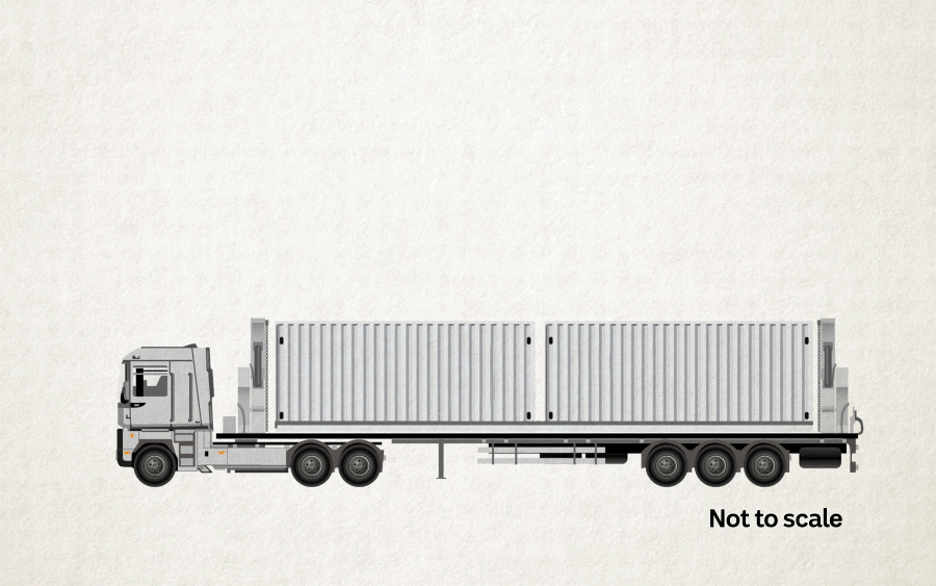
The drones (not to scale) were launched from kit homes loaded onto trucks
Importantly, the low cost of FPV drones compared to the high-value targets they destroyed points to a major shift in the economics of warfare. With units costing as little as a few thousand dollars, Ukraine was able to inflict billions in damages. This cost-effectiveness makes drone swarms an attractive option for other nations and non-state actors alike, potentially triggering a global shift in procurement priorities and military doctrine.
Ukraine’s growing domestic capacity to produce and adapt these drones—supported by Western funding and open-source innovation—suggests that the country is on the frontier of military technology. This operation was not just a tactical success but a demonstration of Ukraine’s ability to develop, deploy, and iterate on battlefield technologies in real time.
Russian Position and Reaction
On the night of 31 May to 1 June, a night before the Ukrainian Operation Spiderweb, Russian forces conducted their largest combined drone and missile strike of the war, which included over 400 drones against several cities and civilian and military infrastructure sites in Ukraine.[9]
In the aftermath of Operation Spiderweb, carried out by Ukraine on 1 June 2025, Russia issued a series of official statements and reactions that reflect deep concern over this unprecedented attack.
The Russian Ministry of Defense confirmed that five air bases—in Murmansk, Irkutsk, Ivanovo, Ryazan, and Amur—were targeted in the operation. It described the strike as a “terrorist attack using FPV drones.” The ministry reported that fires broke out in some aircraft at the Murmansk and Irkutsk bases while claiming that drone attacks on the other bases were successfully repelled without causing human casualties.

Image shows drone attacks on Russian aircraft
Some pro-government Russian media outlets referred to the attack as “Russia’s Pearl Harbor,” highlighting the element of surprise and the significant damage caused. Several commentators called for a strong response, including the use of tactical nuclear weapons—reflecting a sense of panic and anger among certain segments of the Russian elite.
Local authorities in Irkutsk announced their intention to honor citizens who attempted to fend off the drones by throwing stones at them, describing them as “concerned citizens.” Emergency conditions were also declared at other bases, such as Engels and Morozovsk, citing potential follow-up threats.[10]
The operation took place just one day before a new round of peace talks between Russia and Ukraine was set to begin in Istanbul. Although Russia did not withdraw from the negotiations, the strike heightened tensions and may influence the course of the talks.
4. Strategic ImportanceThe strategic significance of Operation Spiderweb lies not only in the destruction it wrought but also in the geopolitical and military recalibration it forced. First, it shattered the long-standing assumption that the Russian heartland was beyond reach. This deep psychological blow to Russia’s military psyche is perhaps one of the most consequential outcomes of the strike. This would force Russia to stretch its defenses across its vast geography, rather than concentrating them near Ukraine.
Ukraine demonstrated that its reach now extends thousands of kilometers into enemy territory. By targeting bases in eastern Siberia, Kyiv forced the Kremlin to confront a new reality: the entire geography of Russia is now within the scope of conflict. This means that Russia must rethink its defense posture, stretching its already thin air defense and security apparatus across its vast territory instead of concentrating forces at the Ukrainian border.
Second, the specific aircraft destroyed in the strike further compound Russia’s strategic dilemma. The Tu-95 and Tu-22M3 bombers are among the few platforms capable of launching long-range cruise missile attacks. Their loss or incapacitation directly affects Russia’s ability to project power across borders. Similarly, the A-50 early warning aircraft play a crucial role in battlefield surveillance and coordination. Damaging these systems not only reduces Moscow’s offensive capabilities but also weakens its defensive coordination.[11]
The operation may also influence Russia’s nuclear posture. By degrading a portion of its long-range delivery and surveillance platforms, Ukraine may have inadvertently impacted the credibility of Russia’s nuclear deterrence, especially as these bombers are dual-use. This adds a new layer of complexity to escalation management, especially with Russia’s increasing reliance on tactical nuclear rhetoric as a form of deterrence.
Moreover, the operation serves a broader strategic purpose for Ukraine by reshaping the narrative of the war. Rather than being confined to defensive resistance, Ukraine has now assumed a more proactive role in dictating the pace and geography of conflict. This shift could prompt NATO and other allies to reassess their own doctrines and expectations for supporting Ukraine, especially in terms of enabling more long-range capabilities and deep reconnaissance.
Lastly, from a symbolic perspective, the operation broadcasts two bold messages. The first message was that the attacks were carried out by Ukraine, without NATO or Western involvement. This was done to minimize potential backlash against the West. No Western-supplied weapons like the long-range Taurus missiles were used. Ukraine released images to show they used commercially available high-resolution satellite imagery to target the bombers parked in the open.
The second message was that no part of Russia is immune from consequences. This revelation not only damages the Kremlin’s domestic narrative of control and supremacy but also injects uncertainty among Russia’s population and political elite. That fear, more than the damage itself, could alter internal political dynamics and public opinion.
5. Implications for Istanbul Peace TalksThe timing of Operation Spiderweb—mere days before the Istanbul peace talks—was no accident. From a diplomatic perspective, the strike significantly altered the negotiating dynamics. First and foremost, it provided Ukraine with renewed leverage. Having demonstrated the ability to conduct high-precision, deep-strike operations independently, Kyiv enters the talks not as a beleaguered petitioner but as a capable and innovative military actor.
This shift enables Ukraine to push for stronger security guarantees, potentially including enhanced Western defense partnerships, no-fly zone agreements, or commitments to long-term defense aid. The strike also gives Kyiv grounds to argue for a more favorable territorial or ceasefire arrangement, as it highlights Ukraine’s ability to disrupt Russia’s offensive infrastructure.
From Russia’s perspective, the strike puts the Kremlin on the defensive both militarily and diplomatically. Domestically, it raises uncomfortable questions about internal security, border control, and the viability of Russia’s air defenses. On the international stage, it complicates any narrative of dominance or inevitability that Russia may bring to the table. The perception of vulnerability undermines Russia’s bargaining power and may force it to concede more than it had initially planned.
There is, however, a risk of overreach. If Ukraine is perceived as too aggressive or unwilling to compromise due to its newfound leverage, it may harden Russian positions. Alternatively, it could motivate Russia to escalate militarily to reestablish credibility, possibly targeting Ukrainian leadership or infrastructure in retaliation.
The operation also serves as a wake-up call to Western allies. It showcases the return on investment from supporting Ukraine’s technological development, especially in drones and AI-enabled systems. This may lead to increased funding, more open technology transfer, and closer defense cooperation.
In sum, Operation Spiderweb redefined Ukraine’s negotiating position, weakened Russia’s strategic image, and introduced new incentives for external powers to back Ukraine’s terms in any emerging settlement framework.
However, according to experts, the heightened level of drone and missile conflict may have crushed the hopes for even a short-term ceasefire, let alone lasting peace.[12] It seems that this scenario is plausible as the second round of Istanbul peace talks on 2 June was largely unproductive and further protracted the negotiation process.[13]
6. What Comes Next?Operation Spiderweb may signal the beginning of a new phase in the conflict, marked by decentralized, technologically sophisticated operations that seek to undermine adversaries far from traditional frontlines. For Ukraine, the success of this operation opens the door to a broader strategy of strategic disruption. Rather than merely defending territory, Kyiv can now proactively dismantle the tools of Russian aggression—airfields, radar stations, logistic hubs—through relatively low-cost, high-impact means.
Such capabilities may deter future attacks on Ukrainian cities and energy infrastructure. The ability to strike back effectively changes the calculus for Russia, especially as it must now devote more resources to homeland security and infrastructure defense. However, the possibility of escalation remains real. Russia could interpret these attacks as existential threats, especially if more nuclear-capable delivery systems are targeted. This could lead to retaliation or a recalibration of Russia’s deterrence posture.
Globally, Operation Spiderweb is likely to have ripple effects. Other countries will closely study Ukraine’s integration of AI, drone swarms, and stealth logistics. We may see a wave of military modernization programs focusing on small, smart systems over traditional heavy platforms. Military doctrine worldwide may shift toward mobility, autonomy, and deep-strike capabilities enabled by non-traditional delivery mechanisms.
Meanwhile, international legal and ethical frameworks will struggle to keep pace. The blurring of civilian and combatant zones, particularly through the use of disguised vehicles or proximity to population centers, raises new challenges for the laws of armed conflict. The use of civilian infrastructure to launch attacks could prompt debates about proportionality, distinction, and responsibility in future conflicts.
Ultimately, Operation Spiderweb represents a blueprint for the future of warfare: intelligent, asymmetric, deeply integrated with civilian systems, and psychologically disruptive. Ukraine has not only defended its sovereignty; it has arguably reshaped the future landscape of global security.
Conclusion
Operation Spiderweb stands as a turning point in the war between Ukraine and Russia, not only because of its bold execution and technical precision but because of what it symbolizes. It represents a shift from traditional, attrition-based warfare to a form of conflict that is smart, asymmetric, and deeply integrated with civilian and commercial technology. With relatively inexpensive means, Ukraine demonstrated the capacity to disrupt some of the most secure and critical infrastructure within the Russian Federation.
Beyond the battlefield, Operation Spiderweb reshapes strategic assumptions, diplomatic dynamics, and the very nature of deterrence. It reaffirms the principle that innovation and resolve can compensate for size and scale, and it establishes Ukraine as a formidable actor capable of transforming adversity into strategic advantage. As nations around the world take note, the lessons of Operation Spiderweb may well define the next generation of military and hybrid conflict.
This operation was not just about damage—it was about declaring that in the 21st century, even a smaller power can strike at the heart of a larger one, provided it has the ingenuity, the intelligence, and the will.
[1] “Russian Offensive Campaign Assessment,” Institute for the Study of War, June 1, 2025, https://shorturl.at/THoKr.
[2] Sasha Vakulina, “’Operation Spiderweb’: How Ukraine destroyed over a third of Russian bombers,” Euronews, June 1, 2025, https://shorturl.at/6nGz2.
[3] “Russian Offensive Campaign Assessment,” Institute for the Study of War, June 2, 2025, https://shorturl.at/MbeB6.
[4] Constant Méheut, Ivan Nechepurenko, and Nataliya Vasilyeva, “Ukraine and Russia Met for 2nd Round of Talks as Attacks Escalate,” The New York Times, June 2, 2025, https://shorturl.at/YiQT6.
[5] Tom Balmforth and Max Hunder, “To attack Russian air bases, Ukrainian spies hid drones in wooden sheds,” Reuters, June 1, 2025, https://shorturl.at/JXeHE.
[6] Chris York, “‘Russian bombers are burning en masse’ — Ukraine’s SBU drones hit ‘more than 40’ aircraft in mass attack, source says,” Kyiv Independent, June 1, 2025, https://shorturl.at/eKXLw.
[7] Sandeep Unnithan, “Russia’s Pearl Harbour moment: 5 takeaways from Ukraine’s stunning attack,” India Today, June 2, 2025, https://shorturl.at/OUYMA.
[8] William H. McRaven, Spec Ops: Case Studies in Special Operations Warfare: Theory and Practice (Presidio Press, 1996).
[9] “Russian Offensive Campaign Assessment,” Institute for the Study of War, June 1, 2025, https://shorturl.at/THoKr.
[10] Maryna Kulakova, “Russia May Hand Out Medals for Throwing Rocks at Ukrainian Drones in Response to Operation Spider Web,” UNITED24 Media, June 2, 2025, https://shorturl.at/m7jKn.
[11] Sakshi Gupta, “Operation Spider Web: Objectives, Significance and Future Implications,” StudyIQ, June 1, 2025, https://shorturl.at/DgyCy.
[12] Sandeep Unnithan, “Russia’s Pearl Harbour moment: 5 takeaways from Ukraine’s stunning attack.”
[13]“Russian Offensive Campaign,” June 2, 2025.



